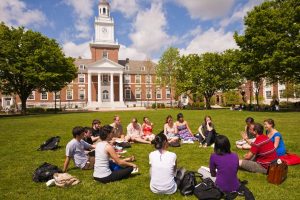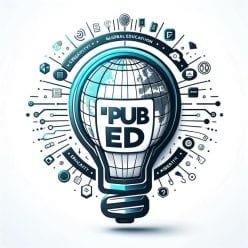Navigating Success: Strategies for Mastering High School

High school marks a crucial chapter in every student’s academic journey. It’s a time of growth, self-discovery, and preparation for the future. Mastering high school requires more than just acing exams; it’s about building a solid foundation for lifelong learning and personal development. In this article, we’ll explore some effective strategies that can help students make the most of their high school years and set themselves up for success.
1. Develop Strong Study Habits
Effective study habits are the cornerstone of academic success. Create a designated study space that’s free from distractions, and establish a consistent routine. Break down your study sessions into manageable chunks, and use techniques like active recall, summarization, and spaced repetition to enhance memory retention. Remember, consistency is key, so allocate time for studying each day.
2. Set Clear Goals
Goal setting provides direction and motivation. Define both short-term and long-term goals for your high school journey. Whether it’s achieving a certain GPA, participating in extracurricular activities, or mastering a challenging subject, having clear goals will keep you focused and determined to succeed.
3. Manage Time Wisely
High school can be demanding, with academic responsibilities often accompanied by extracurricular activities, social events, and family commitments. Learn to manage your time effectively by creating a schedule that balances study time, relaxation, and leisure activities. Utilize tools like planners or digital apps to stay organized and ensure you’re making the most of your day.
4. Get Involved in Extracurricular Activities
High school is not just about academics; it’s also an opportunity to explore your interests and passions. Join clubs, sports teams, or volunteer organizations that align with your hobbies or career aspirations. These activities not only enhance your skills and character but also provide a well-rounded education beyond the classroom.
5. Build Strong Relationships
Teachers, classmates, and mentors can have a significant impact on your high school experience. Foster positive relationships by actively participating in class discussions, seeking help when needed, and collaborating with peers. Don’t hesitate to ask questions and engage in open communication with your teachers to clarify doubts and deepen your understanding.
6. Embrace Challenges
High school coursework can become challenging, and that’s a good thing. Embrace the difficult subjects as opportunities to learn and grow. Develop a growth mindset that views challenges as stepping stones toward improvement. Don’t be afraid to seek extra help or use online resources to grasp concepts you find challenging.
7. Practice Self-Care
Amidst the academic hustle, don’t forget to prioritize your well-being. Get adequate sleep, maintain a balanced diet, and engage in regular physical activity. Taking care of your mental and emotional health is equally important; practice mindfulness, relaxation techniques, and hobbies you enjoy to reduce stress.
8. Seek Guidance
High school is a journey, and you don’t have to navigate it alone. Seek guidance from teachers, counselors, and mentors who can offer advice, support, and insight. If you’re struggling academically or emotionally, don’t hesitate to reach out for help.
9. Stay Curious
Curiosity is the fuel for continuous learning. Approach your studies with a genuine interest in the subjects you’re learning. Don’t hesitate to explore beyond the curriculum, read additional materials, and ask thought-provoking questions. Curiosity will keep your learning journey exciting and meaningful.
10. Reflect and Adapt
Regularly reflect on your progress and experiences. Celebrate your achievements, acknowledge your areas for improvement, and adjust your strategies accordingly. Learning is an iterative process, and adapting based on your reflections will help you refine your approach over time.
Mastering high school is about more than just earning top grades; it’s about developing skills, values, and habits that will serve you well in the future. By cultivating effective study habits, setting clear goals, managing your time, engaging in extracurricular activities, building relationships, embracing challenges, practicing self-care, seeking guidance, staying curious, and reflecting on your journey, you’ll not only excel academically but also grow into a well-rounded individual prepared for the challenges and opportunities that lie ahead.









